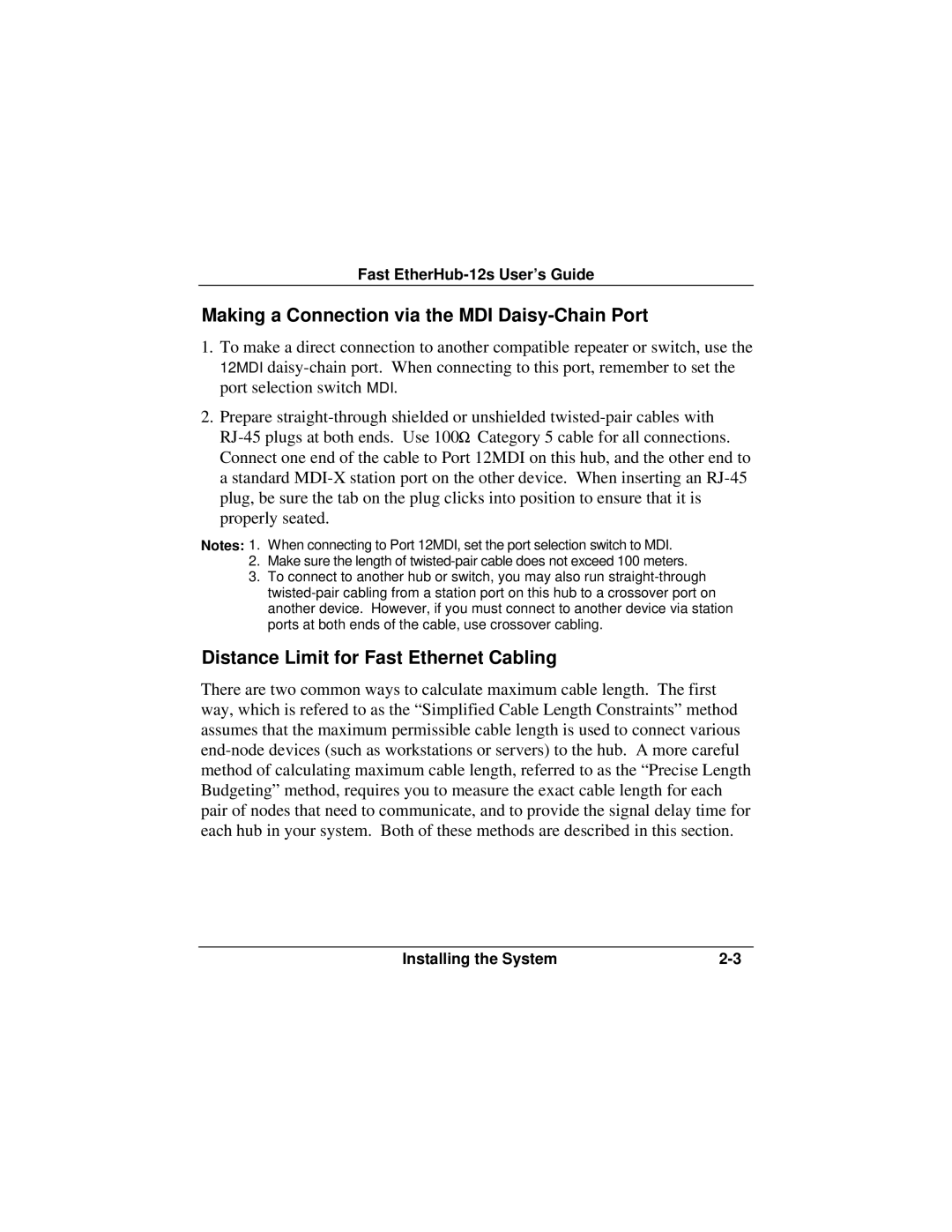Fast EtherHub-12s User’s Guide
Making a Connection via the MDI Daisy-Chain Port
1.To make a direct connection to another compatible repeater or switch, use the 12MDI daisy-chain port. When connecting to this port, remember to set the port selection switch MDI.
2.Prepare straight-through shielded or unshielded twisted-pair cables with RJ-45 plugs at both ends. Use 100W Category 5 cable for all connections.
Connect one end of the cable to Port 12MDI on this hub, and the other end to a standard MDI-X station port on the other device. When inserting an RJ-45 plug, be sure the tab on the plug clicks into position to ensure that it is properly seated.
Notes: 1. When connecting to Port 12MDI, set the port selection switch to MDI.
2.Make sure the length of twisted-pair cable does not exceed 100 meters.
3.To connect to another hub or switch, you may also run straight-through twisted-pair cabling from a station port on this hub to a crossover port on another device. However, if you must connect to another device via station ports at both ends of the cable, use crossover cabling.
Distance Limit for Fast Ethernet Cabling
There are two common ways to calculate maximum cable length. The first way, which is refered to as the “Simplified Cable Length Constraints” method assumes that the maximum permissible cable length is used to connect various end-node devices (such as workstations or servers) to the hub. A more careful method of calculating maximum cable length, referred to as the “Precise Length Budgeting” method, requires you to measure the exact cable length for each pair of nodes that need to communicate, and to provide the signal delay time for each hub in your system. Both of these methods are described in this section.

